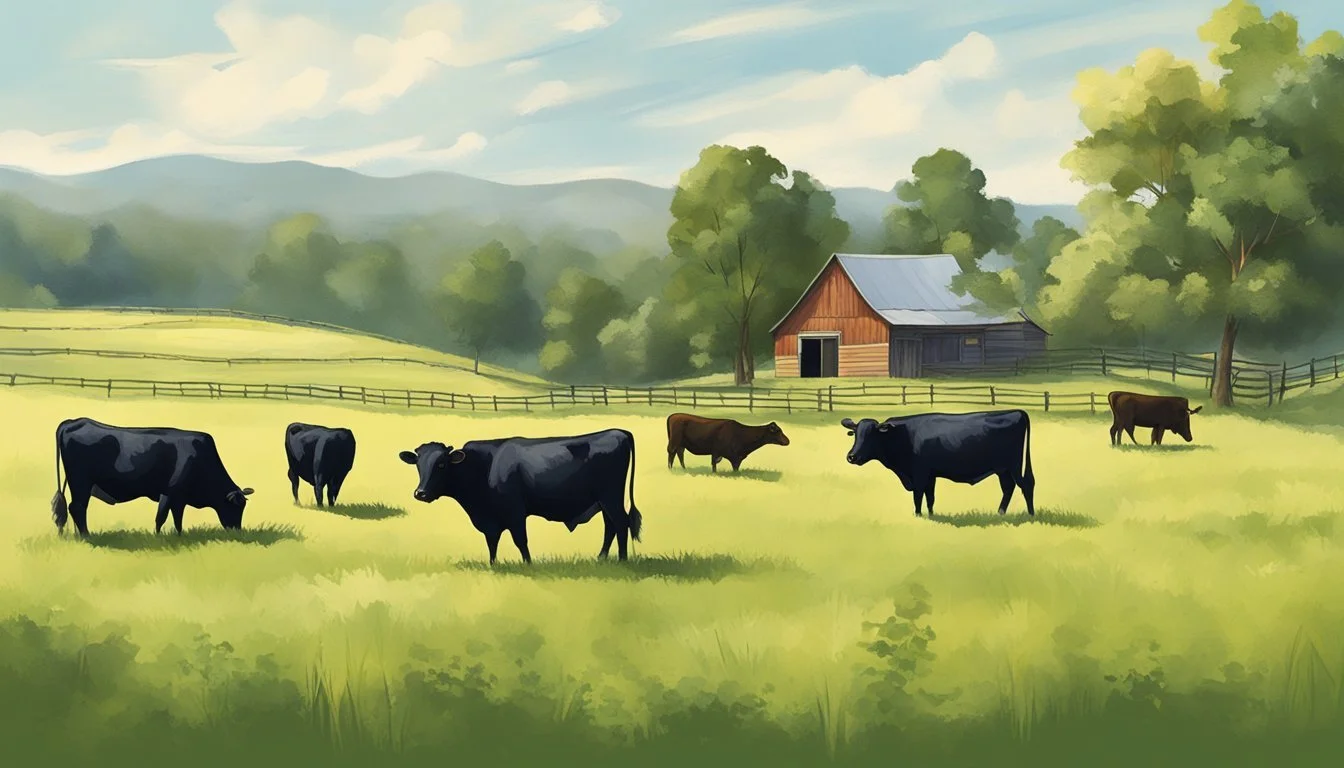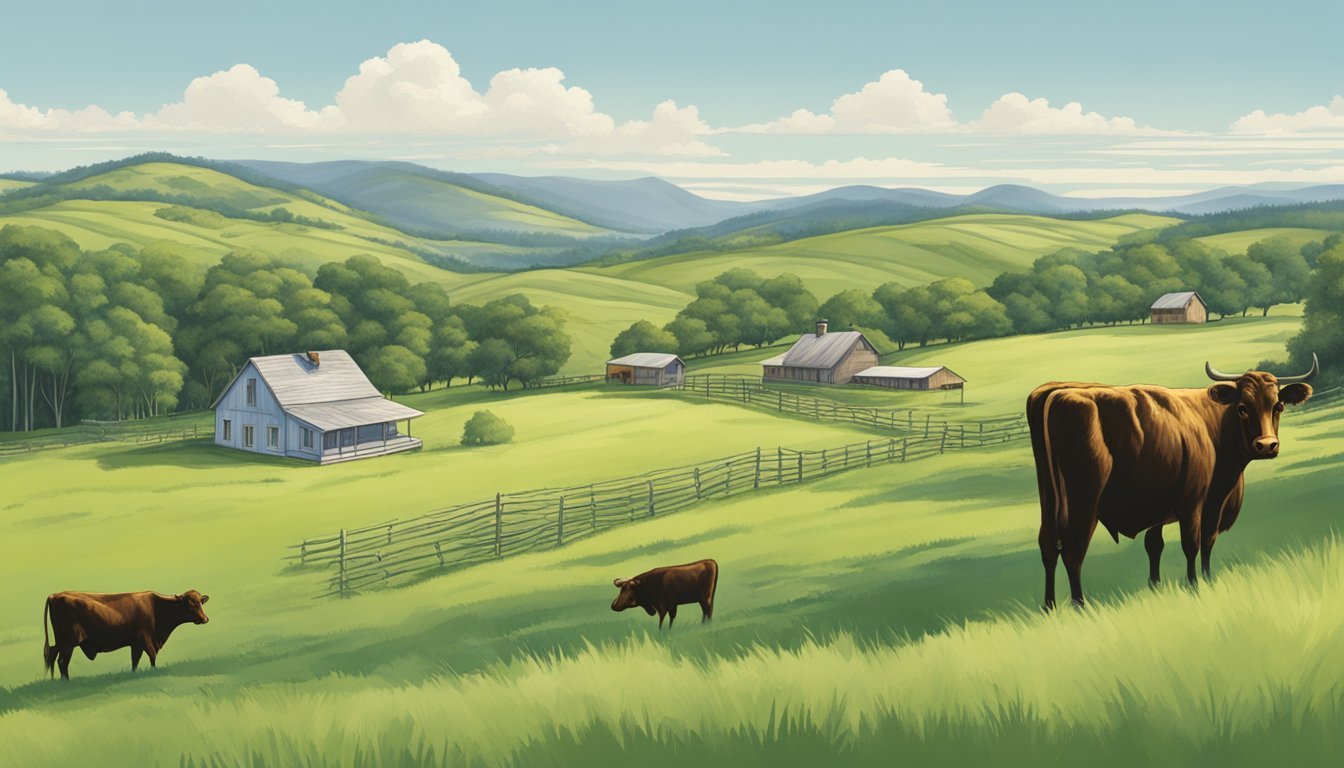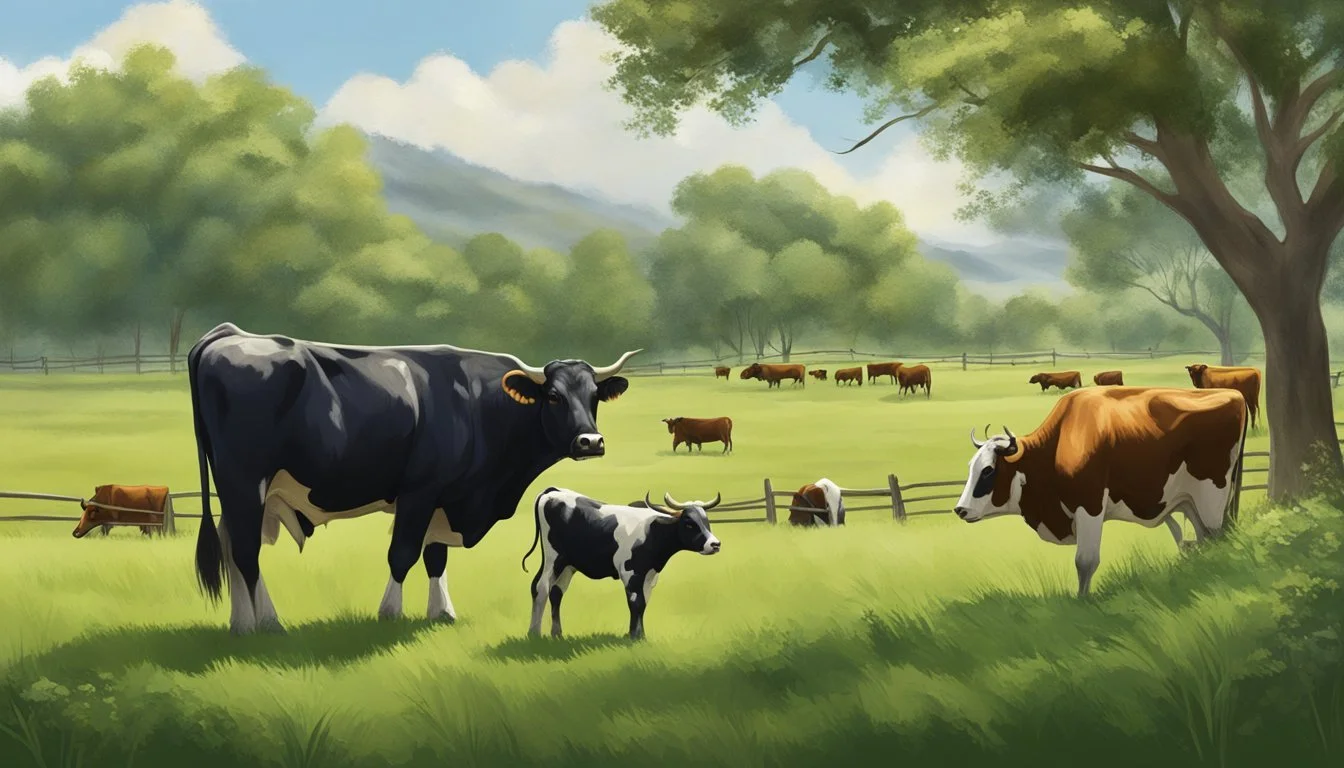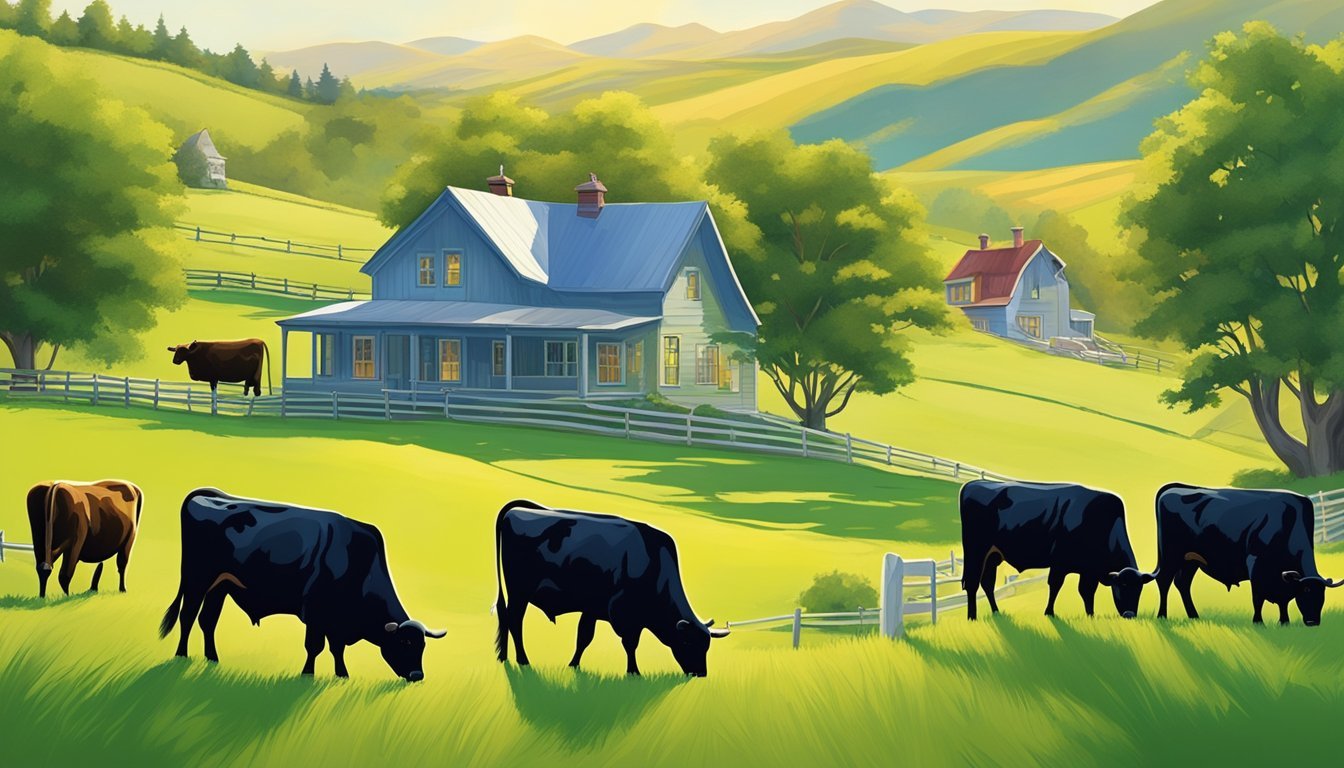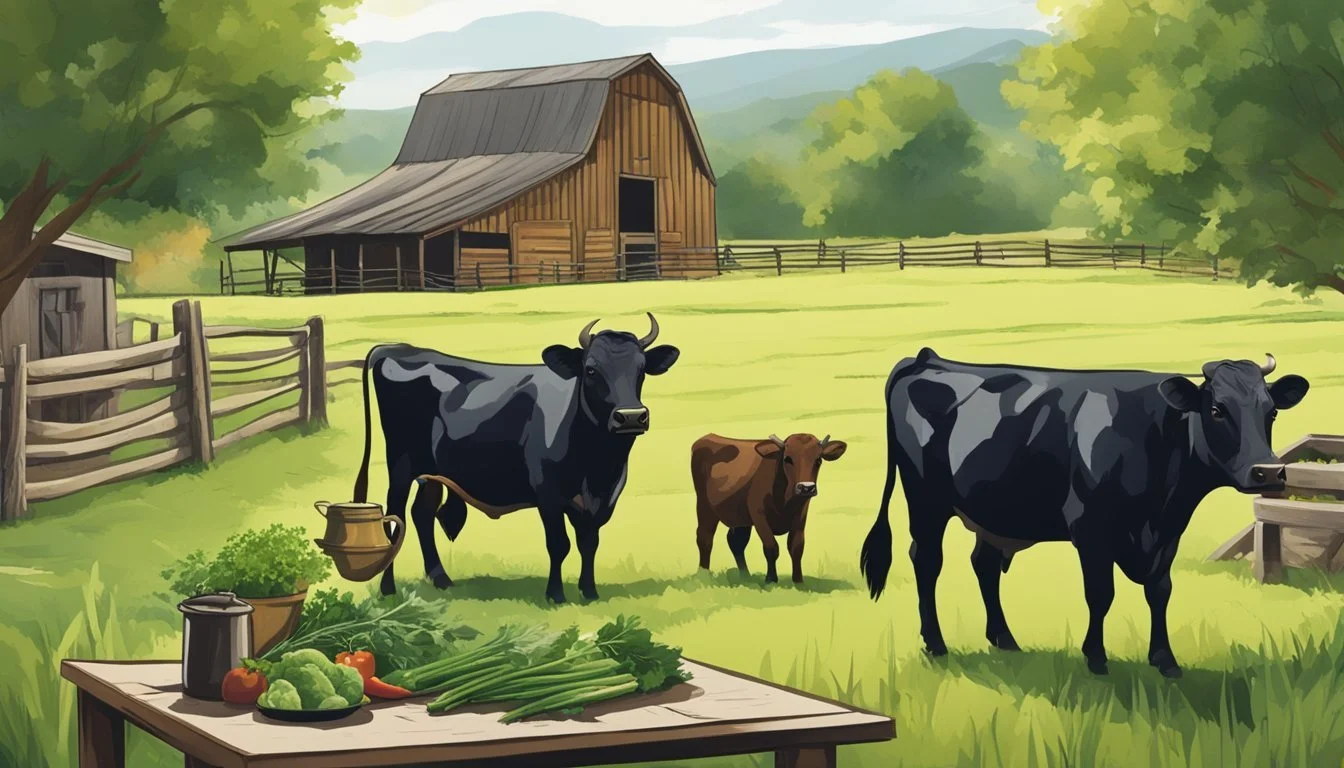How Dexter Cattle Can Enhance the Value of Your Homestead Property
A Smart Livestock Investment
Dexter cattle are increasingly recognized for their remarkable fit within the homesteading context. These compact bovines bring a wealth of benefits to small-scale farming operations, being an ideal livestock choice for those looking to maximize the utility of limited space. Their ability to thrive in various climates and subsist on pasture-based diets or grain supplements enhances their appeal to homesteaders aiming for sustainability and self-sufficiency.
The dual-purpose nature of Dexter cattle means that they offer both high-quality meat and ample milk yield, contributing significantly to the food security and nutritional needs of a homestead. Their smaller stature not only allows for easier handling and lower feed costs compared to larger cattle breeds but also suits smaller acreages without compromising productivity. By ensuring good stewardship and animal husbandry practices, these miniature cattle can significantly enhance the value of a homestead, bolstering its agricultural potential and economic resilience.
Incorporating Dexter cattle into a homestead can be a strategic choice, especially for those intent on developing a diversified and integrated farming system. The breed's hardiness and versatility make them less prone to certain health issues and suited for organic operations looking to reduce reliance on chemical inputs. As such, Dexter cattle present as a salient option for homesteaders wishing to optimize their land's output while adhering to ethical and environmentally conscious farming methods.
The Origin and History of Dexter Cattle
Dexter cattle, with their storied past and utility, present a valuable asset for today's homesteaders. They hold a legacy that spans continents and centuries, offering more than just livestock: they offer a heritage.
The Dexter Breed: From Ireland to the Homestead
Ireland is the cradle of the Dexter breed, with roots tracing back to small landholders in the early 1800s. These hardy cattle hail from the southwestern region, particularly County Kerry. There, they were developed for their versatile use in both milk and meat production, tailored to the limitations of modest land acreage. Over time, their size, temperament, and utility caught the attention of broader audiences, including those across the Atlantic.
The first official records began with the foundation of the English herd book in 1892. By 1924, the English Kerry and Dexter Cattle Society refined its focus to promote the specific lineage of Dexter cattle, rebranding as the "Dexter Cattle Society." Historical herd book entries, such as Volume 27 from 1926, chronicled the registration of nearly a thousand bulls and over three thousand cows since the society's inception, marking a significant proliferation of the breed.
The Dexter's Legacy: A Homesteader's Heritage
The American Dexter Cattle Association (ADCA) perpetuates the Dexter's legacy in the United States. Established to promote the breed and serve as stewards for its future, the ADCA ensures that the storied history of the Dexter is preserved and continues to evolve. This association provides resources and support to Dexter cattle owners, encouraging the sustainable and valuable use of these animals on modern homesteads.
The Dexter's versatile and compact frame, coupled with its gentle disposition, makes them an ideal choice for small-scale farming. Through the ADCA and other similar organizations, the principles and practices developed in Ireland are maintained and propagated, securing the Dexter breed as a continuing thread in the tapestry of agricultural history.
Characteristics of Dexter Cattle
Dexter Cattle exhibit distinct physical and behavioral traits that are beneficial for homestead environments. They are recognized for their compact size and manageable temperament.
Physical Traits: Size, Color, and Horns
Dexter cattle are much smaller than many traditional beef breeds, which contributes to their popularity on smaller farms. Typically, they are about half the size of a Hereford and one-third the size of a Friesian. Adult Dexter cows weigh between 750-1100 pounds, while bulls can weigh up to 1500 pounds.
In terms of color, Dexters primarily display three colors:
Black: most common
Dun: pale brown shade
Red: less common but recognized
Originally, Dexter cattle were horned, but through selective breeding, many are now polled (born without horns).
Behavioral Traits: Temperament and Maternal Instincts
Dexters are known for their docile and gentle nature, making them easy to handle, which is particularly appealing for new cattle owners. This breed is well-suited for close interaction with humans and does well in a variety of management systems.
Their maternal instincts are strong, with cows displaying attentive and protective behavior towards their calves. This maternal quality assures a high rate of survival for calves and eases the management burden on the farmer.
Advantages of Raising Dexter Cattle
Raising Dexter cattle presents unique benefits, particularly for homestead properties aiming for high efficiency in smaller spaces. These cattle exhibit notable health, feed efficiency, and offer a versatile use in both meat and milk production.
Efficiency in Space and Feed
Dexter cattle are a compact breed, requiring less space compared to larger cattle varieties. A key advantage is their prolificacy in converting feed into weight, making them more economical for the homesteader. A smaller frame does not compromise their meat yield, as Dexters efficiently produce a high meat-to-bone ratio.
Space Needed: Minimal compared to larger breeds
Feed Conversion: High; gain more weight per amount of feed
Meat Yield: High despite their smaller size
Dexter Cattle Health and Hardiness
Dexter cattle are known for their robust health and ability to thrive in varying climatic conditions. Their hardiness is a considerable advantage, often resulting in fewer veterinary interventions and lower healthcare costs. Moreover, they adapt well to grass-fed systems, which bolsters their appeal to homesteaders focused on sustainable and organic farming practices.
Adaptable: To different climates and pasture conditions
Healthcare Costs: Generally lower due to natural hardiness
Grass-Fed Potential: Thrive on natural, pasture-based diets
The Dual-Purpose Advantage: Meat and Milk Production
As a dual-purpose breed, Dexter cattle are prized for both meat and milk production. The meat produced is well-marbled and flavorful, while they also yield rich, high-quality milk. Their calm disposition makes them easier to manage for both purposes, adding great value to small-scale farming operations.
Meat: Flavorful with good marbling
Milk: Rich and suitable for various dairy products
Temperament: Calm, aiding in ease of management for dual-purpose use
Livestock Management and Dexter Cattle
Dexter Cattle offer several advantages for efficient livestock management on homestead properties through their adaptable grazing needs, moderate shelter, and water necessities, as well as straightforward feeding and healthcare requirements.
Grazing Needs and Pasture Management
Dexter Cattle are known for their efficient pasture utilization. They require less land per head compared to larger breeds, often thriving on one to two acres for a small herd. This characteristic makes them ideal for small farms. Properly managed rotational grazing ensures that pastures have time to recover, leading to sustained grass growth and reduced feed costs.
Pasture Size per Head: 1-2 Acres
Rotational Grazing: Essential for Grass Recovery
Shelter, Fencing, and Water Requirements
Shelter needs for Dexter Cattle are minimal due to their hardy nature. A simple three-sided structure is often sufficient to provide protection from harsh weather. Fencing should be sturdy and well-maintained to prevent escapes and deter predators, while constant access to clean water is non-negotiable for the health and well-being of the livestock.
Shelter Type: Three-sided Structure
Fencing: Sturdy and Predator-proof
Water: Clean and Constantly Accessible
Feeding and Nutrition: Grass vs. Grain
Primarily, Dexter Cattle are grass-fed, relishing pasture and hay, which contributes to their lean and tender beef quality. Some homesteaders may supplement with grain to increase weight gain, especially during the winter months when grass isn't available. However, Dexters are efficient converters of feed to meat, making them a cost-effective option.
Primary Diet: Pasture and Hay
Supplementary Diet: Grain (optional for weight gain)
Health Care and Disease Prevention
Regular health checks and vaccinations are fundamental to preventing diseases in Dexter Cattle. They are known for their overall robustness, but like all livestock, they require a preventative health care program that includes parasite control and routine hoof trimming to maintain optimal health.
Vaccinations: As Advised by Veterinarian
Parasite Control: Routine and Effective
Hoof Trimming: Regular Maintenance Needed
Breeding and Calving with Dexter Cattle
Dexter cattle offer valuable benefits through their hardy genetics and impressive lifespan, making them a solid choice for homestead breeding programs. Efficient management practices further enhance calving success and calf care.
Breeding Practices for Dexter Cattle
Dexter cattle are renowned for their adaptability and longevity, with cows capable of breeding and producing healthy offspring well into their 20s. When breeding Dexter cattle, it's pivotal to note their genetic traits for size, temperament, and milk production. Bulls and cows should be selected based on their physical health and breed characteristics to ensure the best possible outcomes.
Breeding Cycle: Regular breeding leads to calving primarily in spring or summer.
Gestation Period: The average gestation for Dexter cattle is around 283 days, with bull calves occasionally gestating slightly longer than heifer calves.
Adhering to proper breeding schedules and maintaining thorough records contributes to controlling the genetic quality and the timing of calving events.
Managing Calving and Calf Care
Calving in Dexter cattle requires diligent management to assure the health of both the calf and its mother. Since Dexter cows are generally good mothers, calving issues are less likely, but monitoring is essential during the birthing period.
Preparation: Before calving, ensure cows have adequate nutrition to support the health of both mother and calf.
Post-Calving:
Monitor calves for early signs of health, vigor, and feeding.
Assist first-time mothers if necessary, ensuring calves can nurse adequately.
Early intervention in cases of calving difficulties can prevent complications, supporting a thriving calf that contributes positively to the homestead's value and sustainability.
Dexter Cattle in Different Climates and Seasons
Dexter cattle are recognized for their adaptability across various climates, showcasing a remarkable capacity to thrive in both cold and warm environments. Their hardiness makes them an excellent choice for homesteads in diverse geographical locations.
Adapting to Cold Climates and Winter Care
In cold climates, Dexter cattle exhibit strong adaptability due to their thick coat and robust body condition. Their smaller size compared to other breeds allows them to maintain body heat more efficiently during the winter months. Homesteaders should provide:
Shelter: Adequate protection from wind and precipitation.
Bedding: Dry, insulated areas to retain warmth.
Nutrition: Increased caloric intake to compensate for energy used to maintain body heat.
Monitoring these cattle for signs of discomfort or cold stress is crucial. Their resilience is beneficial, but it does not replace the need for attentive winter care.
Thriving in Warm Climates and Heat Management
Dexter cattle also perform well in warmer climates. Their shorter stature and lighter structure facilitate better heat tolerance. To ensure their well-being in the heat, it is important to provide:
Shade: Natural or constructed areas to shield them from direct sunlight.
Water: Constant access to fresh water for hydration and cooling.
Ventilation: An open, breezy environment to encourage air circulation.
Despite their capacity to manage heat effectively, Dexter cattle still require measures to prevent heat stress. Providing conditions that mitigate the risk of overheating is vital for their productivity and health.
Dexter Cattle as Homestead Helpers
Dexter Cattle are a versatile addition to homesteads, providing draft power, educational benefits to families, and a reliable source for food self-sufficiency for preppers.
Training Dexters for Work: Oxen and More
Dexter cattle are compact and strong, making them suitable for draft work around the homestead. Homesteaders may train these animals to become oxen, capable of pulling carts and plows, which is particularly useful for small-scale farming operations. Their tractable nature and manageable size also allow for easier handling and training, even for homesteaders with limited livestock experience.
Educational Value for Homesteading Families
Children on homesteads can glean valuable lessons from raising and caring for Dexter cattle. The breed's manageable size removes the intimidation factor, fostering a safe environment for children to learn about animal husbandry. This hands-on experience with livestock teaches responsibility and the principles of sustainable farming practices through a practical, engaging approach.
The Prepper's Choice: Dexter Cattle for Self-Sufficiency
For preppers, the self-sufficiency that comes with keeping Dexter cattle is unmatched. They are a dual-purpose breed that provides both milk and meat from minimal pastureland, optimizing the use of available resources. Given their efficient feed-to-product conversion, Dexter cattle align perfectly with the prepper's goal of maximizing the yield from their homesteads while maintaining a manageable herd size for long-term disaster scenarios.
Economic Considerations for Dexter Cattle Owners
Dexter Cattle owners often find that the breed offers a favorable balance between cost of ownership and potential economic benefits. From meat production to dairy processing, these versatile animals can be a profitable cornerstone for small-scale farm operations.
Cost of Ownership vs. Economic Benefits
Initial Investment:
Purchase price: Varies depending on age, sex, pedigree, and seller. Expect to pay several hundred to a few thousand dollars per animal.
Shelter: Minimal, as they are a hardy breed. Cost-effective shelter options are often sufficient.
Maintenance:
Feeding: Dexter cattle can thrive on pasture-based diets, which can reduce feed costs compared to grain-fed alternatives.
Health: Routine veterinary care and husbandry practices (dehorning, vaccination, castration) are similar to those for other cattle breeds.
Economic Benefits:
Meat yield is significant given their smaller size; on average over 60% meat conversion rate.
Dairy products: High butterfat content in milk can make it ideal for cheese making.
Market demand for Dexter beef is growing, often fetching higher prices per pound than commercial breeds.
Marketing Dexter Products: Meat, Milk, and More
Meat:
Dexter beef is known for its quality and taste. Grass-fed Dexter beef can be sold directly to consumers or through local farmers' markets.
Local niche markets often are willing to pay a premium for high-quality, sustainably raised Dexter beef.
Dairy:
A Dexter cow can produce 1.5 to 2.5 gallons of milk per day, with high butterfat content ideal for cream, butter, and artisan cheeses.
Marketing raw milk or processed dairy products directly to consumers can be lucrative, but owners must be aware of local regulations regarding raw milk sales.
By carefully considering these economic factors, Dexter cattle can potentially offer significant value to a homestead property. Successful owners manage costs effectively while taking full advantage of the breed's diverse product offerings.
The Culinary Aspects of Dexter Cattle Products
Dexter cattle offer a distinctive culinary experience, from the flavorsome and tender beef to the rich, protein-packed milk—valued additions for any homesteader’s table.
Taste and Quality of Dexter Beef
The beef of Dexter cattle is renowned for its exceptional flavor and tenderness, attributed to the fine marbling within the meat. Even though they are a small breed, these cattle produce beef that rivals larger breeds in quality. Homesteaders appreciate Dexter beef not only for its rich taste but also because it offers a balance of leanness and juiciness. With its moderate fat content, the meat presents a desirable option for high-quality beef production on smaller scales.
Dexter Milk: Flavor, Protein, and Dairy Products
Dexter cattle's milk stands out for its high butterfat content, resulting in a creamier texture and more flavorful dairy products such as cheese and cream. Compared to average milk from larger dairy breeds, Dexter milk often contains higher levels of protein, contributing to its nutritional value and making it an excellent choice for cheese-making due to better curd formation. Dexters are often referred to as a "family cow" because they yield a manageable quantity of milk, which can range from about 1.5 to 2.5 gallons per day, making them ideal for family consumption and small-scale processing into homemade dairy products like cheese and butter. The milk's rich taste and versatility make it a coveted commodity for those interested in crafting artisanal dairy products or enjoying raw milk directly.
Understanding Dexter Cattle Ownership
Owning Dexter cattle offers a myriad of benefits for homesteaders, yet it's crucial to weigh both advantages and disadvantages. Involvement with dedicated communities and the American Dexter Cattle Association can greatly supplement the ownership experience.
Pros and Cons of Raising Dexter Cattle
Advantages:
Size: Dexters are smaller than most cattle breeds, requiring less space and feed, which can translate to reduced costs.
Versatility: They are dual-purpose, providing both quality meat and moderate milk yields, perfect for diversified homestead operations.
Temperament: Their calm and docile nature makes them easier to handle, especially for new cattle owners.
Adaptability: These cattle are hardy and can thrive in various climates, from harsh to more temperate conditions.
Disadvantages:
Marketing: While gaining popularity, Dexter cattle may still be less recognized in the commercial market, potentially posing a challenge for sales.
Milk Quantity: Though Dexters produce milk, the quantity may not be sufficient for large-scale dairy operations compared to specialized dairy breeds.
Connecting with Dexter Communities and Associations
Community: Dexter cattle owners often benefit from a strong, supportive community. Networks such as local farming groups or online forums provide resources, advice, and camaraderie.
American Dexter Cattle Association (ADCA): The ADCA is a pivotal resource for Dexter cattle owners. They offer:
Registration and pedigree tracking.
Educational materials.
Networking opportunities with other Dexter breeders and owners.
Further Information
Educational Materials: The ADCA provides comprehensive guides and handbooks for Dexter cattle care, breeding, and maintenance. Access to up-to-date information is vital for successful ownership.
Networking Opportunities: Local and national associations facilitate connections among breeders, which can be instrumental in acquiring stock, learning, and even marketing cattle.

